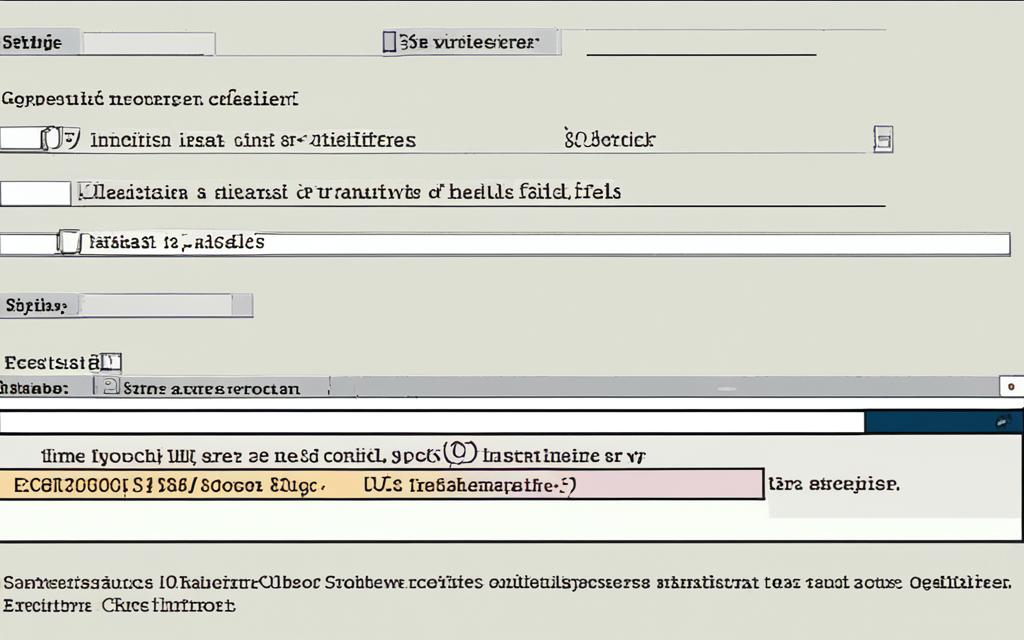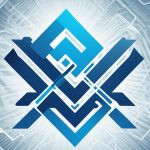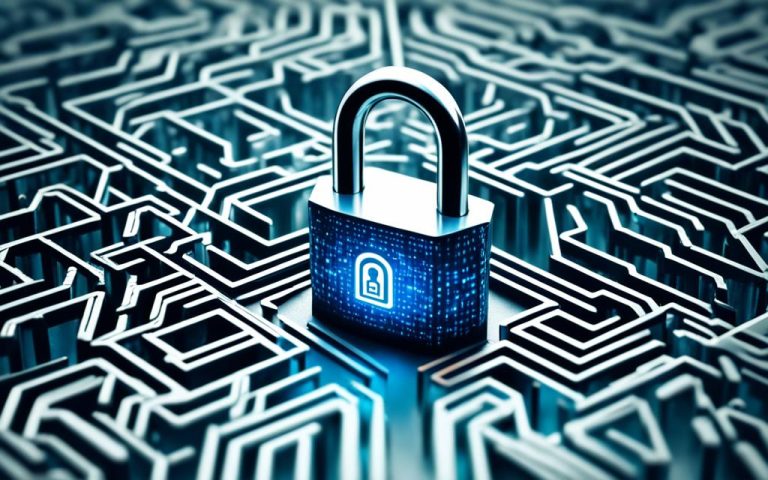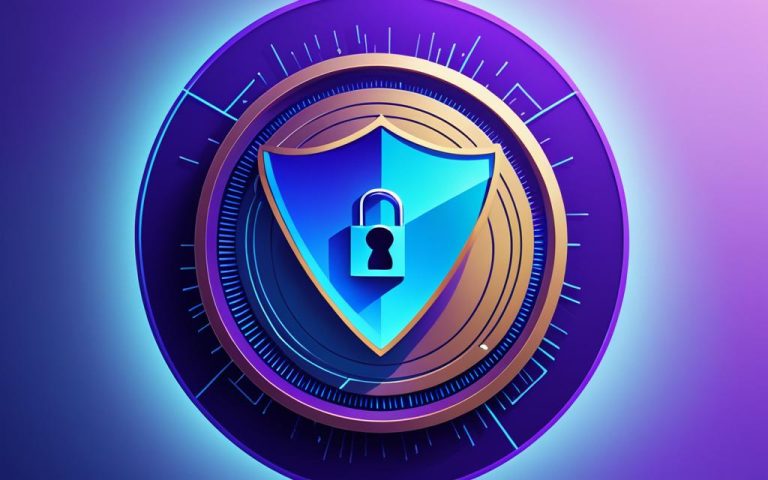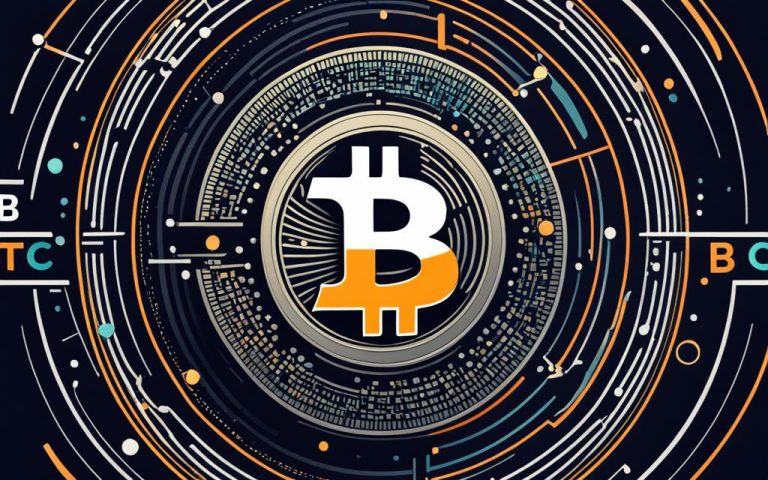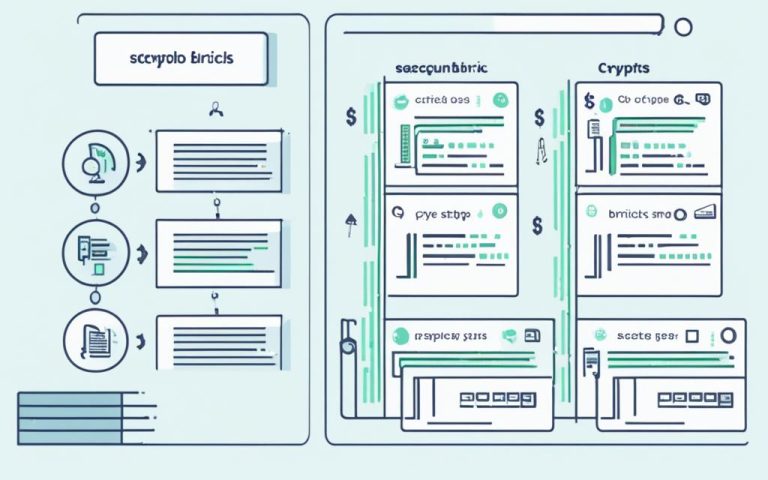Welcome to our guide on blockchain technology. We’ll look at three key parts that form the basis of blockchain networks. This will give you a clear view of how this groundbreaking technology works.
The Block: Container of Transaction Data
The block is at the heart of blockchain technology. It has three important elements: the header, transaction data, and the nonce. The header includes vital details like a timestamp, a random mining number, and the previous block’s hash. It links all blocks in the chain together.
The transaction data part keeps track of transactions and smart contracts. It stores these transactions securely. This ensures that everything is clear and unchangeable within the blockchain.
The nonce is a one-time number crucial to mining. Miners look for a nonce that matches the block’s data to create a valid hash. This process is computationally demanding. It’s key to the blockchain’s safety and decentralized nature.
The Chain: Sequential Linking of Blocks
Blocks join the blockchain one after the other, recording transactions in order. The chain keeps the blockchain honest by connecting blocks with unique hashes. Each block points to the hash of the one before it. This forms a traceable, unbreakable chain back to the first block.
This process of linking forms a decentralized web of nodes. Nodes keep the blockchain working smoothly. They promote trust and openness. Full nodes hold the entire blockchain and check transactions. Light nodes keep only block headers and check transactions through full nodes.
Conclusion
Blockchain technology is making big changes in fields like finance and manufacturing. It uses special keys, a network of peers, and a shared ledger for safe, decentralized deals.
Experts think blockchain platforms will hold 10% of the world’s GDP by 2024. Cryptography, consensus mechanisms, and the distributed ledger are crucial. They ensure the network is safe, open, and unchangeable.
To learn more about blockchain’s three main parts, check out these links:
The Block: Container of Transaction Data
In any blockchain project, blocks are key. They act as a container for important info. This includes transaction data and other details.
Every block has three main parts: the block header, the transaction data, and the nonce. We will look at these parts:
- The Block Header: It holds essential metadata for security. This includes the block’s hash, a digital fingerprint for the block, the timestamp of block addition, and the previous block’s hash. Together, they ensure the blockchain’s integrity and immutability.
- The Transaction Data: This area stores all the transaction data during a certain period. Transactions can be about moving digital assets, executing smart contracts, or other info. This data boosts transparency and accountability in the blockchain network.
- The Nonce: Every block has a nonce, a random number for cryptographic use. Miners look for the right nonce to validate and add the block to the chain. Finding this nonce demands computational effort. It plays a key part in keeping the blockchain secure and trustworthy.
The interaction among the block header, transaction data, and nonce keeps the blockchain running smoothly and safely. Miners are crucial in solving the nonce puzzle to add new blocks. This enhances the blockchain’s overall integrity.
| Component | Description |
|---|---|
| Block Header | Has metadata like block hash, timestamp, and previous block’s hash. |
| Transaction Data | Logs all the transactions within the block. |
| Nonce | A unique number for cryptographic hashing. |
Table: Components of a Blockchain Block
The Chain: Sequential Linking of Blocks
The chain in blockchain architecture is about sequential linking of blocks. Each one has a unique hash and points to the previous block’s hash. This forms a chronological and immutable chain of blocks.
This linking keeps the blockchain true, as changing a block would alter its hash. This would break its connection to the next blocks.
The chain starts with the genesis block, the very first block. This setup keeps records of transactions safe from fraud and changes.
| Block | Hash | Previous Block’s Hash |
|---|---|---|
| Block 1 | abc123 | genesis |
| Block 2 | def456 | abc123 |
| Block 3 | ghi789 | def456 |
Here, Block 2 links to Block 1 using its hash. Block 3 does the same with Block 2. If someone alters Block 2, it would break the chain and make the next blocks invalid.
The blockchain chain makes sure transactions are chronological and immutable. This leads to a ledger that is clear, secure, and can be trusted.
Conclusion
Understanding blockchain technology starts with its basic parts. The block, chain, and network work together. They make a secure and see-through system for digital assets. The block keeps transaction data safe and correct. By linking in order, the chain makes sure the blockchain cannot change. The network, with its connected nodes, keeps the blockchain working and true in a shared way.
Blockchain can change industries by offering a solution that’s safe from tampering. This increases trust and efficiency. As more people and businesses start using it, its influence grows. It can improve finance, supply chains, healthcare, and more. Blockchain can make things smoother, cut down on costs, and give power to people.
In the end, blockchain is a big deal. Its key parts are the block, chain, and network. These create a safe and open way to deal with digital money. By getting into blockchain, we can tap into its huge benefits and lead in the tech world.
FAQ
What is blockchain technology?
Blockchain technology is a way to keep data safe. It uses blocks, chains, and a network to work.
What is a blockchain block?
A blockchain block keeps transaction data. It has a block header, transaction data, and a nonce.
What is the purpose of the block header?
The block header has important info like the block’s hash, timestamp, and the previous block’s hash. It helps to connect blocks together safely.
What is the transaction data section?
The transaction data section holds all the block’s transactions. It shows the movement of digital assets.
What is the nonce?
The nonce is a special number for cryptography. Miners solve for it to add a block to the chain.
What is the blockchain chain?
The blockchain chain links blocks in order. Each block has a unique hash and a link to the previous block.
Why is block linking important?
Linking blocks keeps the blockchain secure and unchangeable. If a block changes, its hash changes, breaking the link to other blocks.
What is the chronological order in blockchain?
Blocks in a blockchain are arranged in chronological order. It starts with the first block, called the genesis block.
Why is the blockchain chain immutable?
The blockchain can’t be changed because modifying a block changes its hash. This stops fraud and unauthorized changes.
What is the role of the blockchain network?
The blockchain network has nodes that keep the blockchain running. Nodes can be full or partial and help keep the network safe and working.
How does blockchain technology impact various industries?
Blockchain is changing many industries. It offers a safe, clear, and unchangeable system for digital transactions. This improves processes like supply chain, finance, and healthcare.
Why is it essential to understand blockchain technology and its potential?
Knowing about blockchain is key today. It brings new chances for creating, being efficient, and being clear. This helps shape the future of industries and economies.

